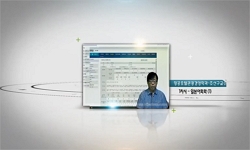The school space, which will be required in the rapidly changing future society, should be composed of a unit learning space including various programs to enable lifelong learning. Therefore, in this study, the type of unit learning space and arrangem...
http://chineseinput.net/에서 pinyin(병음)방식으로 중국어를 변환할 수 있습니다.
변환된 중국어를 복사하여 사용하시면 됩니다.
- 中文 을 입력하시려면 zhongwen을 입력하시고 space를누르시면됩니다.
- 北京 을 입력하시려면 beijing을 입력하시고 space를 누르시면 됩니다.
https://www.riss.kr/link?id=A107988677
- 저자
- 발행기관
- 학술지명
- 권호사항
-
발행연도
2021
-
작성언어
Korean
-
주제어
초등학교 ; 미래교육 ; 교육과정 ; 단위학습공간 ; 일본 ; Elementary School ; Future Education ; Curriculum ; Unit Learning Space ; Japan
-
등재정보
KCI등재
-
자료형태
학술저널
- 발행기관 URL
-
수록면
3-10(8쪽)
- 제공처
-
0
상세조회 -
0
다운로드
부가정보
다국어 초록 (Multilingual Abstract)
The school space, which will be required in the rapidly changing future society, should be composed of a unit learning space including various programs to enable lifelong learning. Therefore, in this study, the type of unit learning space and arrangement type is derived by analyzing the case of elementary school with future education type spatial composition, and the characteristics of each are considered. In order to respond to future education in the future, we present basic data for the composition of a unit learning space including a student-centered creative educational space plan. The scope of the study was selected as an elementary school case planned as a future education type in order to derive common characteristics of unit learning spaces. In addition, considering the cultural similarity of school management methods and wearing indoor shoes, it was limited to elementary school cases built in Japan among advanced overseas cases. The period was analyzed as cases constructed within 15 years, and cases with low connectivity between the interior and exterior spaces were excluded. The results of the study are as follows. First, in the type analysis of unit learning space, the type varies depending on the usability of the multi-purpose space connected with the classroom, and the extended type expands the width of the hallway and naturally flows into movement to connect the space. Second, in the arrangement analysis of unit learning space, there is an external activity space that naturally occurs according to the configuration of two or more unit learning spaces, and there are a type having an individual external space and a type having a common external space. Depending on the purpose of this, the layout will be different. Third, in the analysis of the combination of type and arrangement of unit learning space, there is a type of combination that induces various activities in the internal and external space through the common external space. In addition, there is a type of combination that has excellent connection between interior and exterior spaces in both directions.
목차 (Table of Contents)
- Abstract
- 1. 서론
- 2. 초등학교에 관한 이론적 고찰
- 3. 그린 스마트 미래학교의 이론적 고찰
- 4. 사례분석
- Abstract
- 1. 서론
- 2. 초등학교에 관한 이론적 고찰
- 3. 그린 스마트 미래학교의 이론적 고찰
- 4. 사례분석
- 5. 결론
- 참고문헌
동일학술지(권/호) 다른 논문
-
지방도시 공공도서관 이용 활성화를 위한 기초연구 - 군산시와 익산시 공공도서관을 중심으로 -
- 한국실내디자인학회
- 유성은(Yoo, Sung Eun)
- 2021
- KCI등재
-
호텔 로비의 바이오필릭 디자인 공간특성 분석 연구 - 내외부 전망과 공간관계 특성을 중심으로 -
- 한국실내디자인학회
- 이소영(Lee, So-Young)
- 2021
- KCI등재
-
한국과 중국의 노후산업시설 재생디자인 표현특성 연구 - 복합문화시설을 중심으로 -
- 한국실내디자인학회
- 모열진(Mao, Yue-Chen)
- 2021
- KCI등재
-
프로젝트 기반의 협력적 CPS를 적용한 실내디자인 서비스러닝 교과 운영 사례 및 교육효과
- 한국실내디자인학회
- 안은희(An, Euh-Hi)
- 2021
- KCI등재






 DBpia
DBpia






